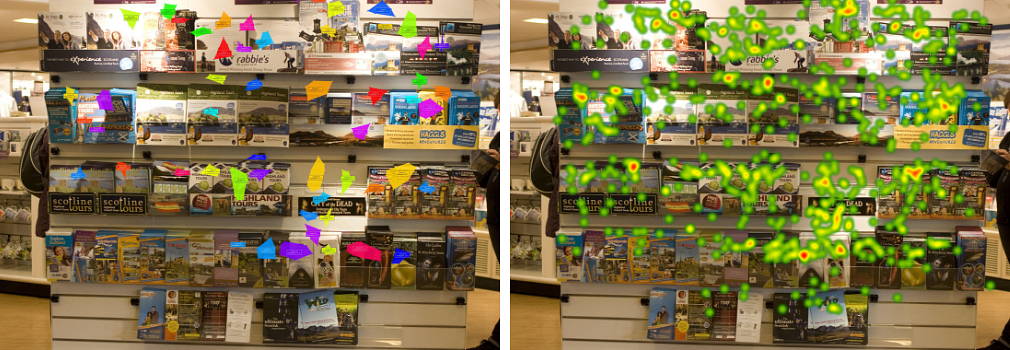Gaining tourist insights through eye tracking

The challenge
We had worked together with Scotland’s national tourism organisation for a number of years, including supporting them in designing the best customer experience on their web channel.
After a successful collaboration, Visit Scotland asked us to investigate the customer experience in their Visitor Information Centres. The aim was to understand how effectively the physical environment supported the needs that visitors came to the centre with, and the impact that this had on their subsequent experience.
Our approach
We met visitors as they entered the centre and interviewed volunteers about why they had come to the centre. We then fitted them with specialist eye tracking glasses, which monitored where they were and what they were looking at as they moved around the store. The glasses also worked together with IR markers attached to the walls behind the literature and merchandise shelving, to provide more detailed analysis of the areas that received the most attention from the participants.
Participants were asked to wear the eye tracking glasses during their visit and complete whatever task they’d come to carry out.
The eye tracking technology enabled us to answer the following questions:
- How did visitors engage with the centre?
- Which were the most widely viewed sections of the literature and merchandise shelving?
- Which areas of the large tour/attraction advertising leaflet wall were viewed the most?
- Was the signage in the centre effective in guiding visitors to the various areas?
A further short interview was conducted as they returned the glasses, which helped us to understand how they had found the visitor experience and how successful they had been in achieving the goal of their visit.

The result.
The study provided Visit Scotland with a number of useful insights that could be used to make actionable improvements to the centres, including:
- Identifying when signage was not seen or understood; improved signage would help the visitors to find the right information faster.
- We were able to identify the most visible areas on the leaflet wall, which helped Visit Scotland to better understand the value, and subsequent cost model, for their advertisers.
- The eyetracking footage also enabled us to create a footfall map, enabling us to understand where visitors went throughout their visit and which of the Information Centre’s areas receive more or less footfall.
The ability to record all of this information without disturbing the participants’ natural behaviour helped us to gather more realistic insight, which Visit Scotland was able to use to inform the ongoing design of their visitor centre experience.
User Vision showed us how the eye-tracking techniques that we have used to develop our websites could be used in the live environment of our Information Centres. The results helped us refine our retailing, information provision and customer service.